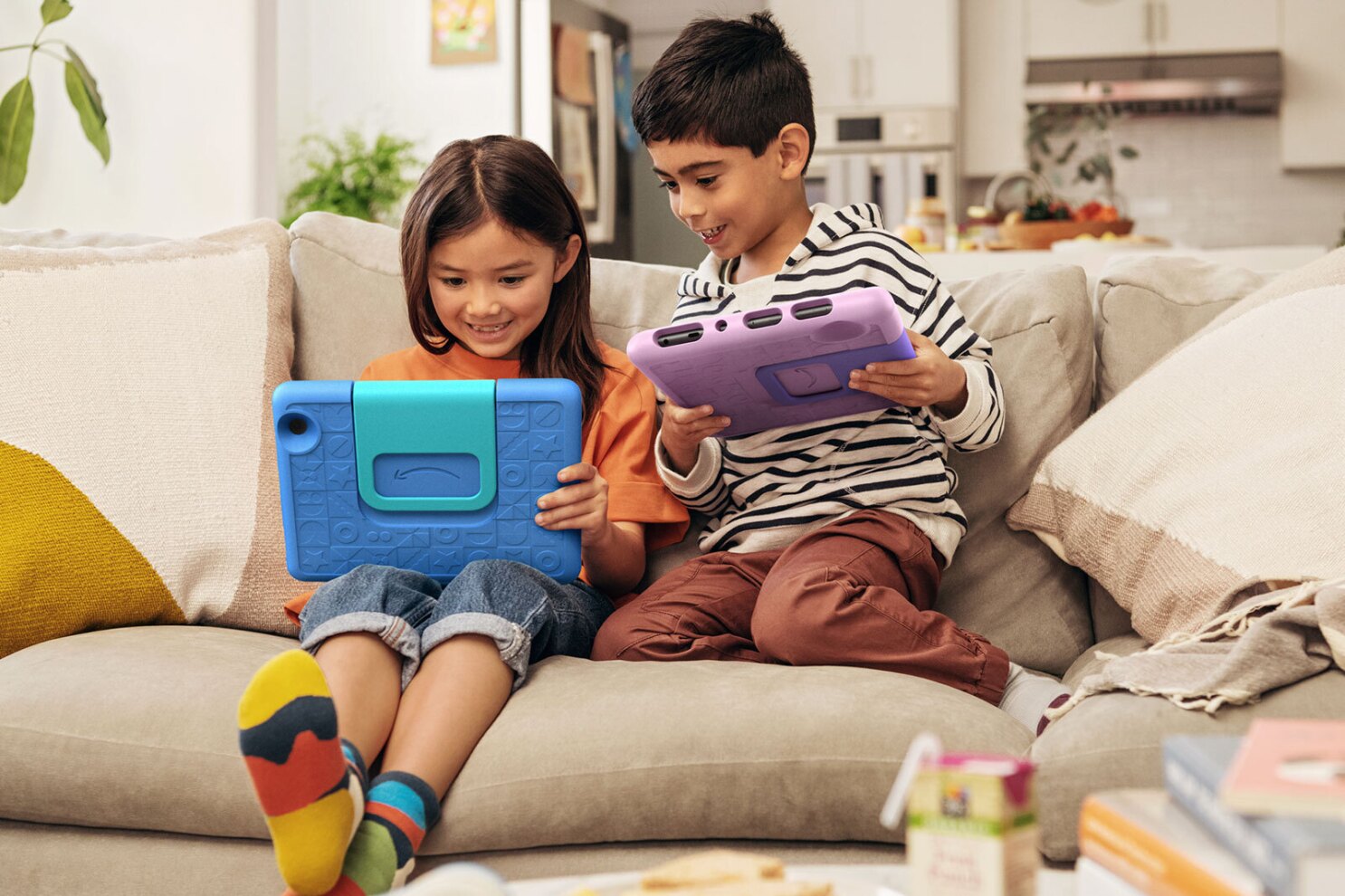こんな疑問、ありませんか?
・子どもにスマホやタブレットを渡すタイミングはいつがいい?
・時間やコンテンツをどう管理すれば、依存やトラブルを防げる?
・デジタル機器を禁止するより、上手に活用させたいけれど方法がわからない
いまやスマートフォンやタブレットは、子どもの学習や遊び、家族のコミュニケーションにも欠かせないツールです。一方で「長時間の視聴」「ネットいじめ」「睡眠不足」など、リスク面を心配する声も後を絶ちません。
本ブログでは、発達心理学とメディアリテラシーの視点から、子どもにデジタル機器を“安全かつ前向き”に使わせるためのコツを解説します。
1.子どもとデジタル機器の付き合い方を考える前提
(1) 年齢と発達段階を踏まえる
0~2歳は「触覚・視覚の刺激」を得るだけで満足する時期。画面よりも現実の“手ざわり”体験を優先したい年齢です。3~5歳では、短時間の動画視聴や簡単な知育アプリが好奇心を広げるきっかけになる場合もありますが、親の同席が基本。小学生になると、ゲームや調べ学習など主体的な活用が増えますが、まだ自己管理は難しいため「時間」「場所」「内容」のガイドラインが不可欠です。
(2) 外発的報酬と内発的動機づけ
「ゲームが終わったら宿題」など“アメとムチ”で管理すると、機器が余計に魅力的に映りやすく、逆効果になることも。むしろ「動画で調べたことを家族に発表してみよう」「好きな絵をタブレットで描いてみよう」など、学びや創造につながる“内発的動機づけ”をセットにすると健全に活用しやすくなります。
(3) 親自身のメディア態度がモデルになる
子どもは親のスマホ使用時間や使い方をよく見ています。食卓や就寝前に大人がずっと画面を見ていると、「それが普通」と学習してしまうもの。まずは大人が“デジタルとの適切な距離感”を示すことが、最大の教育効果をもたらします。
2.「時間」「コンテンツ」「環境」を整える3ステップ
(1) 時間ルールを“見える化”
・未就学児:1回15~20分、1日1時間以内を目安に区切る
・小学生:平日は1時間、休日は2時間など家庭ルールを決め、キッチンタイマーやスマートスピーカーのアラームで“第三者の声”を活用するとスムーズです。
ポイントは「残り◯分だよ」とカウントダウンを事前に知らせ、心の準備をさせること。
(2) コンテンツは親子で選ぶ
年齢レーティングやレビューを確認し、「学習系アプリ」「創造系アプリ」「エンタメ系アプリ」をバランスよく選択。インストール前に一緒にトレーラーやサンプル画面を見て「面白そう?」「何が学べそう?」と会話することで、主体的に選ぶ姿勢を育てます。
(3) 使用環境を限定する
リビングやダイニングなど“目が届く場所”をデフォルトに。就寝1時間前以降はブルーライトが睡眠ホルモンの分泌を妨げるため、機器をリビングに置いて充電する“パーク&チャージ”方式がおすすめです。
3.トラブルを防ぐ心理学的アプローチ
(1) 共同視聴・共同操作でメディアリテラシーを育む
子どもが動画やSNSを使うときは、同席して「これは広告かな?」「この情報は誰が発信してる?」と問いかける習慣を。クリティカルシンキングを早期から身につけると、フェイク情報やネットいじめを見抜く力が高まります。
(2) ルール作りは“子どもを巻き込む”
親が一方的に決めると反発しがち。ホワイトボードに「使う時間」「守れなかったときのリカバリ策」を子どもと一緒に書き出すと、当事者意識が生まれ遵守率がアップします。
(3) 代替行動を用意する
「時間だから終わり」だけでなく、「この後はブロック遊びしよう」「外で縄跳びしよう」と“次の楽しい行動”を提示するとスムーズに切り替えやすくなります。
4.デジタル機器を“学びと創造”に変えるコツ
(1) 「見る」から「作る」へシフト
写真・動画編集アプリやプログラミングアプリを使って、オリジナル作品を作る体験を。親子でミニ動画を撮影・編集し、家族上映会を開くとクリエイティブな喜びを共有できます。
(2) デジタル×リアルのハイブリッド遊び
タブレットで調べた星座を実際の夜空で探す、昆虫図鑑アプリを片手に公園で虫を観察するなど、リアル体験と結びつけると学習効果が倍増。
(3) “教える役”を任せる
子どもがアプリの操作に慣れたら、親や兄弟に使い方を教えてもらう“先生役”を依頼。アウトプットすることで理解が深まり、自己効力感も高まります。
まとめ
スマホやタブレットは、使い方次第で「依存を招くリスク」にも「学びを広げる翼」にもなり得ます。年齢に応じた時間・コンテンツ・環境の3ステップを整え、ルール作りには必ず子どもを巻き込みましょう。親自身が模範となり、共同視聴や共同操作でメディアリテラシーを育てれば、デジタル機器は“禁止すべき敵”ではなく“創造と探究のパートナー”へと変わります。
忙しい日常の中でも、子どものデジタル体験に寄り添い、「見る・遊ぶ」から「作る・学ぶ」へと導くこと――それがテクノロジー時代を生きる子どもたちに必要な力を伸ばす近道です。今日から、家庭のデジタルルールを見直し、親子で安心・安全・創造的なメディアライフを楽しんでみませんか?
- How to Give Kids Smartphones & Tablets: Parenting Psychology in the Digital Age
- Conclusion
How to Give Kids Smartphones & Tablets: Parenting Psychology in the Digital Age
Do You Ever Wonder…?
- When is the right time to hand a child a smartphone or tablet?
- How can we manage screen time and content to avoid dependency or trouble?
- Instead of banning devices, how can we guide children to use them positively?
Smartphones and tablets are now essential tools for learning, play, and family communication. Yet parents worry about long screen times, cyber‑bullying, and sleep disruption.
This blog offers evidence‑based tips—grounded in developmental psychology and media literacy—to help children use digital devices safely and productively.
1. Basic Principles Before Handing Over a Device
(1) Match Rules to Developmental Stage
- 0‑2 yrs: real‑world tactile experiences matter more than screens.
- 3‑5 yrs: short, co‑viewed videos or simple learning apps can spark curiosity, but always with a parent present.
- Elementary: children start using games and research apps, yet still need clear “time, place, content” guidelines.
(2) Intrinsic vs. Extrinsic Motivation
Instead of “Finish homework, then you can play,” tie device use to intrinsic goals: “Let’s research and present what you learned,” or “Create a drawing on the tablet and show us.” This shifts focus from rewards to learning and creativity.
(3) Parents as Digital Role Models
Kids observe how adults use phones. If parents scroll during dinner or before bed, children assume that’s normal. Modeling balanced media habits is the strongest lesson.
2. The Three Pillars: Time, Content, Environment
(1) Visualize Time Rules
- Preschoolers: sessions of 15–20 min, total ≤1 h/day.
- Elementary: e.g., 1 h on weekdays, 2 h on weekends.
Use timers or smart‑speaker alarms so “the device” announces the end, not just the parent.
(2) Choose Content Together
Check age ratings and reviews. Balance “learning,” “creative,” and “entertainment” apps. Watch trailers or screenshots with your child and ask, “What seems fun? What could you learn?”
(3) Limit the Setting
Keep use to shared spaces like the living room. One hour before bed, park and charge devices outside the bedroom to protect sleep.
3. Preventing Trouble: Psychological Strategies
(1) Co‑Viewing Builds Media Literacy
Sit with your child: “Is this an ad? Who made this video?” Early critical thinking helps them spot fake news and online cruelty later.
(2) Co‑Create Rules
Write “screen‑time plan” and “what happens if we slip” on a whiteboard together. Involvement boosts ownership and compliance.
(3) Offer Alternative Activities
When time’s up, propose the next fun thing—blocks, jumping rope—so transitions feel positive, not punitive.
4. Turning Devices into Tools for Learning & Creativity
(1) Shift from “Watching” to “Making”
Use photo‑video editors or coding apps to create original content. Host a family premiere of your mini‑movie to celebrate creativity.
(2) Blend Digital and Real Worlds
Research constellations on a tablet, then find them in the night sky. Use an insect‑ID app while exploring the park—linking screens to real experiences multiplies learning.
(3) Let Kids Teach
When children master an app, ask them to teach siblings or parents. Explaining boosts understanding and self‑efficacy.
Conclusion
Smart devices can be a risk for addiction—or wings for exploration. By setting age‑appropriate limits on time, content, and context, and by involving children in rule‑making, parents can transform gadgets from “enemies to ban” into “partners for creativity.”
Model balanced use, co‑view content, and guide kids from “watch & play” to “create & learn.” Revisit your family’s digital rules today and enjoy a safe, inspiring media life together!




コメント